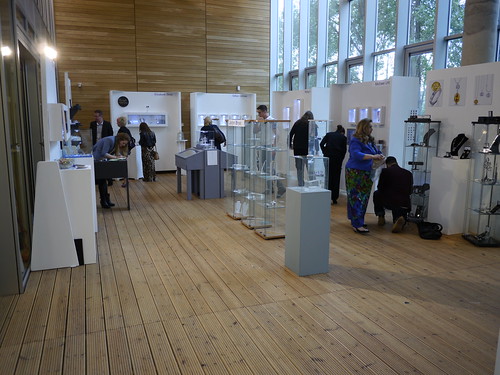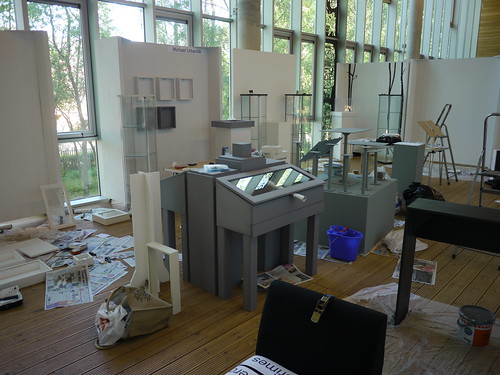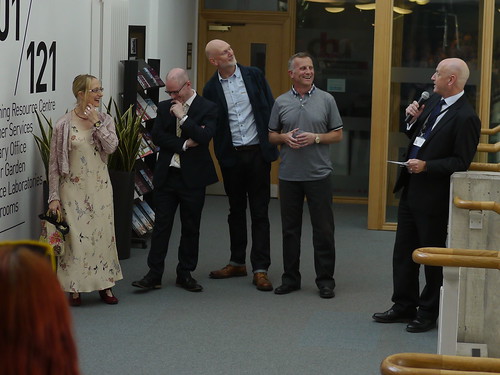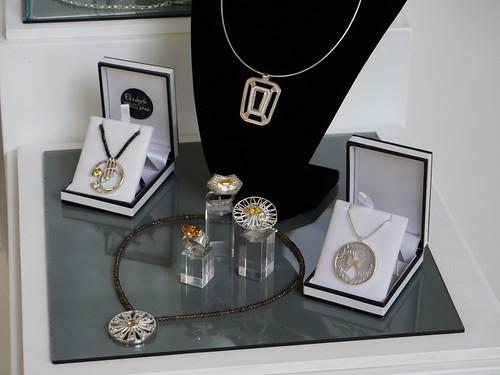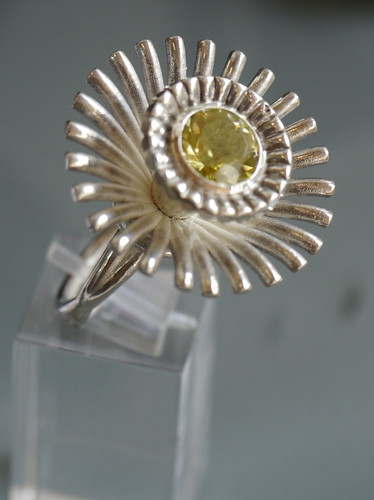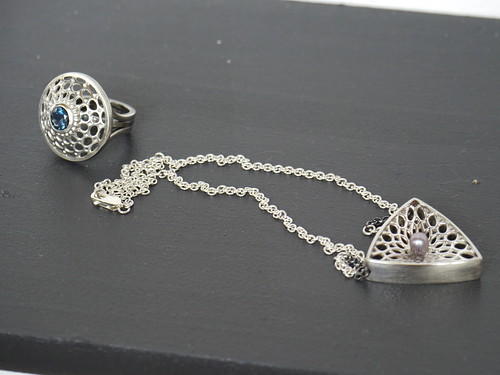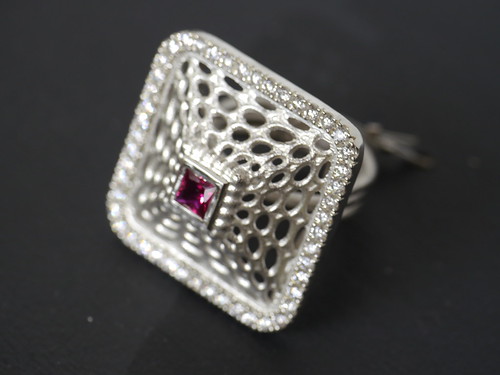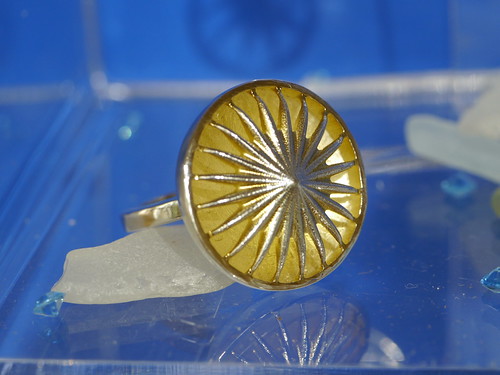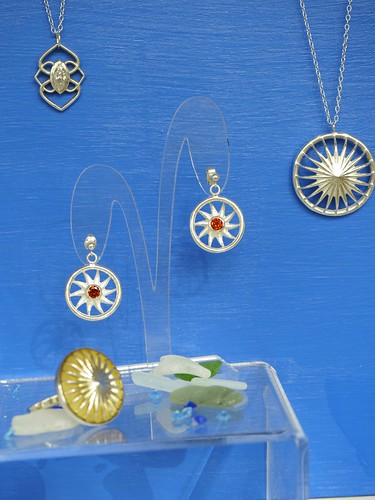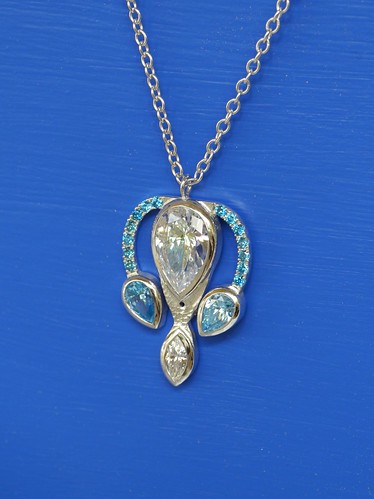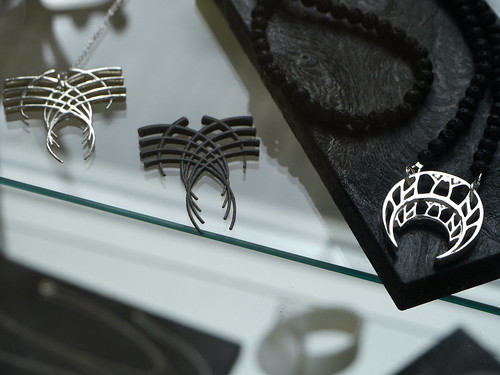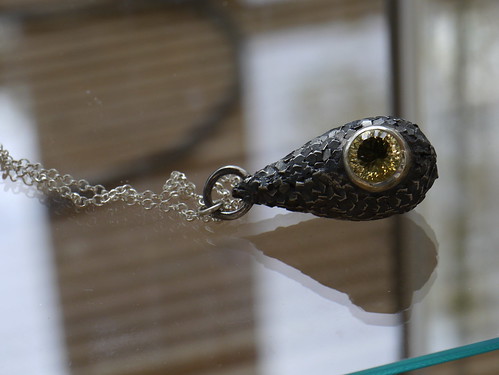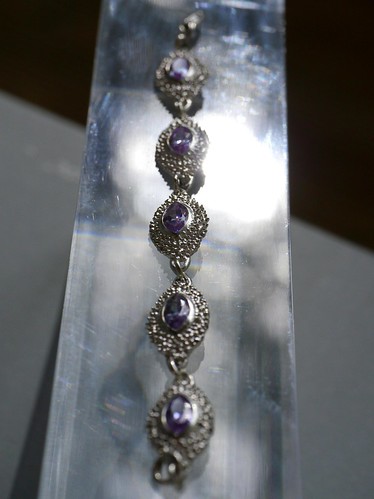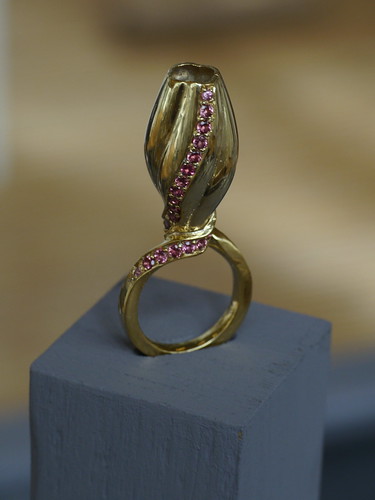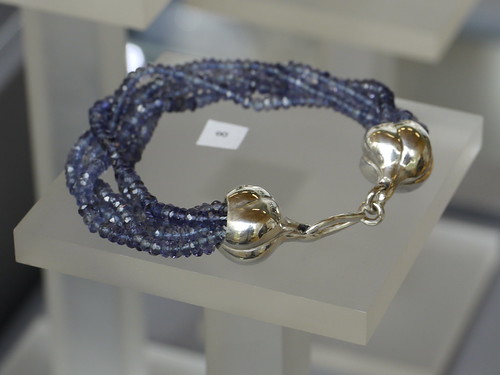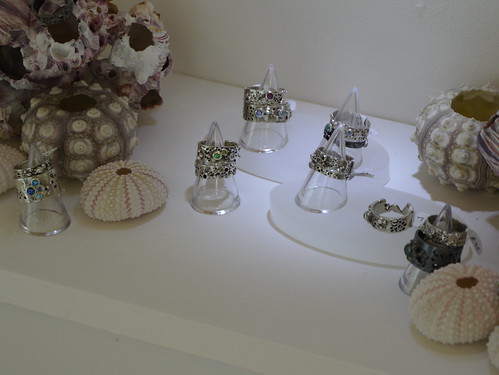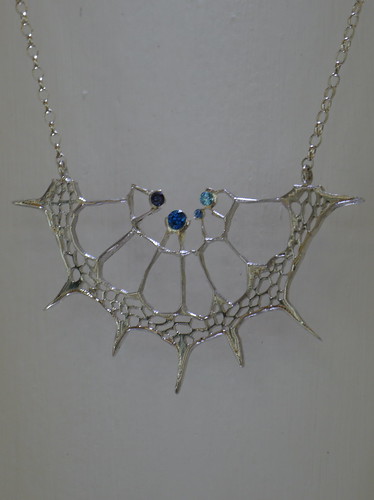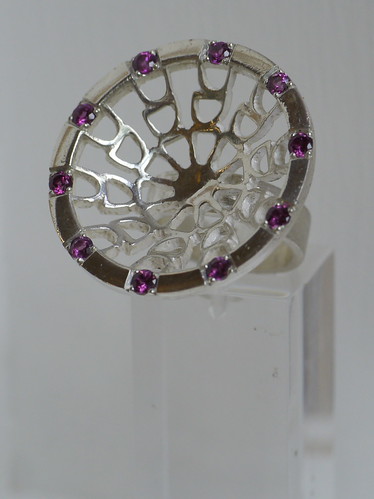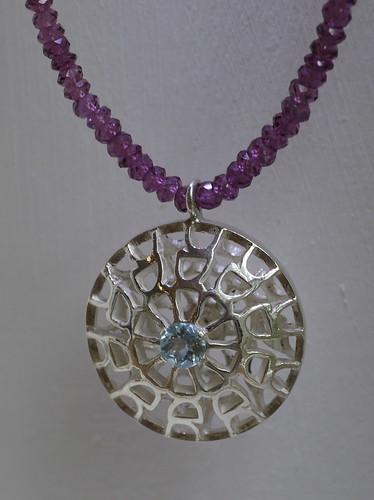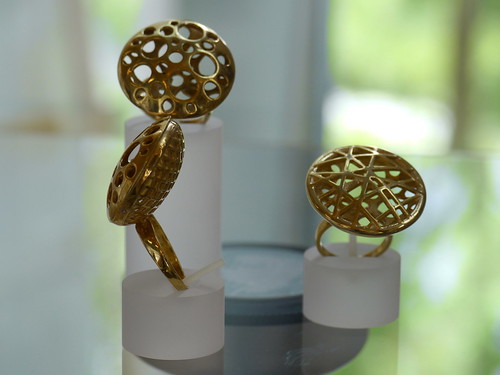Last but not least - of course, these are my students - in the round of Scottish degree shows is the turn of North Glasgow College. We've only been offering degrees in Jewellery Design and Technology for three years, validated through Leeds University - the last time for Leeds, we have an exciting partnership with Dundee's own Duncan of Jordanstone College of Art starting next academic year - but this is the first year that I've personally felt part of the degree-show circuit, felt as if we now have the gravitas necessary to take part in these august ceremonies. This, of course, is my own shortcoming: the work produced over the three years, as well as the results of some of our graduates - from MA courses to designer at Links of London, from running the jewellery section of Maklabs in Glasgow to hothousing at Vanilla Ink in Dundee - should have assured me that the course was up to standard.
Unlike the art schools - GSA, ECA, DJCAD - we are much more focused on commercial concerns. Our design approach is commerce-led and we have a course which is technology-based. All our students are able to work in CAD/CAM technologies independently, they are able to design in CAD and prepare models for a variety of CAM manufactures such as milling and 3d printing. We also focus on the importance of having transferable skills and of being able to design commercial products. There is far less conceptual study and philosophy and much more on business and manufacture. As such, we slot very comfortably in with the courses already available in other institutions.
As usual, the show was still being set up at five minutes to six, due to open at six.
I was, however, very pleased to see that the chaos that had reigned earlier in the week had been cleared and that the place looked mostly presentable.
After the speeches, the place filled up and the show began in earnest with beaming graduates enthusiastically talking about their work. I was really pleased with the various displays that they had come up with and the whole show looked good in the lovely "Winter Garden" space in the college.
A few of the students have done especially well, having come to us with absolutely no CAD/CAM experience, either from non-jewellery courses or from courses in which CAD/CAM practice was not taught - our own courses have a fair amount of this taught at all levels.
Elizabeth Skea won't mind me pointing out that she is one of the people who had to learn CAD fast, having come from a commercial stained-glass background. In some ways this gave her the double-disadvantage of also having to think primarily "flat". I particularly love her daisy ring, somewhat reminiscent of 1950s cocktail jewels:
Mairi Moyes not only produced some fascinating work but managed to perplex us all by refusing to read her letter which told her the degree she had been awarded, which made it very difficult to speak to her as I - obviously - knew and was itching to congratulate her. I do know that at one point she was convinced that she was going to get a third for forgetting to bring me a cake when she brought one for the other lecturers!
In order to make this work, she explored panelling plugins and scripting for Rhino quite extensively.
Michael McDevitt has produced some of the most obviously commercial work in the show, with a nice variety to his collections which some of the others didn't achieve. I very much like this gilded ring:
Yuk Ching Wong took a variety of approaches to her work, leading to a lack of direction in her collection and a show that while composed of interesting enough items failed to give any sense of what she is capable of achieving:
Sheona Stirling put together a collection of jewellery based on fairy-tales, especially Nordic ones and has created a whole "brand" package, "Folkesagn" to go with it, a highly successful approach. It is interesting that while one immediately thinks of frailty and light when thinking of fairy tales, this collection seems much darker and more earthy:
Shabnum Ali also came to us with very limited CAD/CAM experience and had to learn a lot at the beginning of the course. It is a tribute to her that she completed and pulled her show together - with much support and assistance from her family:
As with Mairi, mentioned above, Jaclyn Bryson worked quite extensively on her own researches into scripting and plugins for Rhino and Gemvision Matrix. She came to us without much CAD/CAM experience and in terms of "distance travelled" - which is sometimes a patronising euphemism for "not very good", but in this case I really mean "distance travelled" - she has achieved a lot, developing a range which is not only exciting but very commercial. She has, indeed, been approached by a company interested in developing her range for production. I especially like this "dragon eye" pendant:
And her ranges of highly textured elements set with stones:
Christina Rose Leon is one of our students from many years ago who had been working as a jeweller and - perhaps surprisingly - travel-writer since she left college. She decided to return and get her degree and brought a great deal of energy, enthusiasm and worldly experience to the group. Her collection is elegant, smart and fresh
Yes, the stones are a continuous strip from the shank to the upper form!
Robyn Cameron will not take kindly to comparisons of her barnacle rings to the work of Gerda Flockinger as that is the first thing all of us said when we saw them! I actually really like them and think that they have a less "calm" feel than Flockinger's work, more dynamic and her colour palette is certainly much bolder.
Somewhat related to these was her collection of pendants based on photomicrographs:
I've done Gillian Grimes a bit of a disservice by only photographing one of her collections because I liked her use of colour in them. She has a wider range of work than this and it is worth looking at her website (see below) for more details and information:
Coming from a product design background and with a very central-European aesthetic, Michael Urbancik brought an interesting dynamic to the group (And, dare I say, thanks to his saucily low-slung jeans, his bum? Yes, I said it!). His work consisted largely of variants on a form of ring and a few related pendants, which he wouldn't let me photograph because they couldn't be taken out of the cases... Still, the rings are worth seeing:
Overall, my colleagues and I are very pleased with the show, the students pleased with their results and the visitors pleased with what they saw and purchased. Another great night!
More work by all the students and links to their own websites can be found here.
The Scottish degree shows are now over but the interesting jewellery north of the border is not: next up, the very exciting staff and student show of work made at North Glasgow College, City of Glasgow College and Clyde College using new technologies. The only criteria for entry is that a computer has to have been used at some part of the design and/or manufacture, "Handmade By Machines", which is being held at The Lighthouse in Glasgow.

